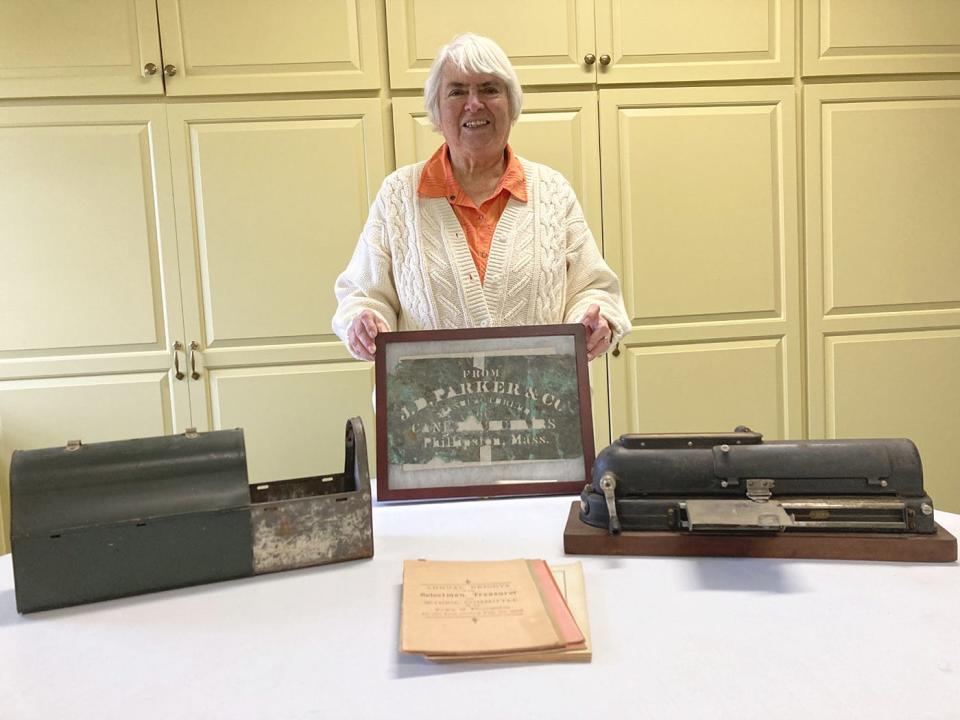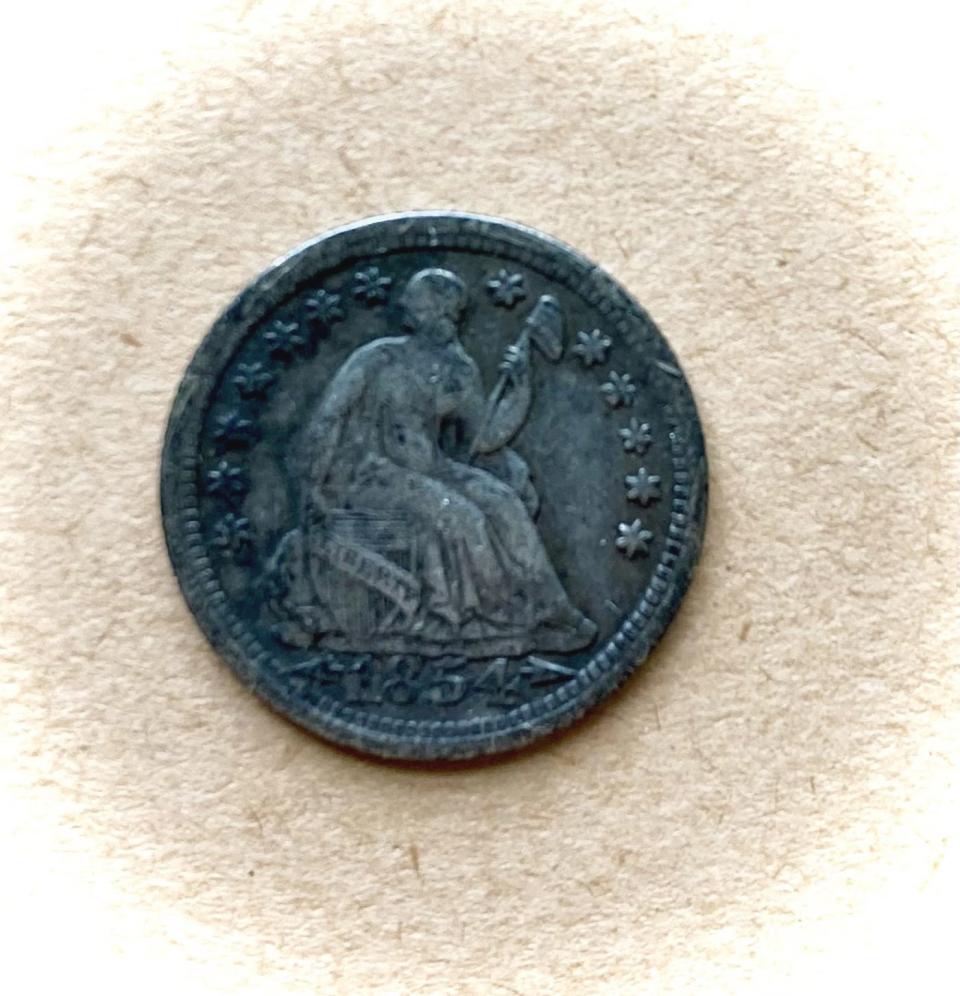Local view: Here are some local museum surprises, from A to Z
April 12 was the day our museum curator, Jane French, would present her special "Museum Surprises" program for the Historical Society of Phillipston meeting. She said it would be based on 26 things from A to Z that were represented in our museum.
That sounded like a unique undertaking, but I couldn't imagine anything in the collection that could begin with Z.
When we arrived at the meeting, we saw four tables covered with sheets. The lumps in the spreads told us that the surprises lay underneath. A feeling of mystery prevailed as we all settled in for an evening of surprises.
Then, one by one, the surprises were unveiled and Jane told us fascinating stories about the items as she held them up or showed photos of objects that were too large to bring to the program. The following is a sampling of some of the items for each letter of the alphabet:

* A is for archeology. The Historical Society building was formerly the Methodist Church built in 1849 on State Road. In 2014, it was moved down the road to its present location, and digs under the former location uncovered items from the old church.
* C is for an 1896 check writer. Records show that G.W. Todd & Co. of Rochester, New York, manufactured 85,000 of them in 1910. This was the first effort to protect security for checks.
* F is for the Fifth Massachusetts Turnpike. It was a rough mountainous toll road that passed through Phillipston. Route 2 quite closely follows its path today. Interestingly, the cannons from Fort Ticonderoga were hauled to Boston on that road in 1775 for use at the Battle of Bunker Hill. After that event, the road was called Military Road and the section on 2A that passes through Templeton continues to have that name.
* G is for grants. Phillipston was settled by grants given to the men who volunteered to fight in the American Indian wars.
* K is for keeper. The keeper of the town's ammunition was the church, then called the meetinghouse. In 1774, every district had militia units. Musters were held to prepare men to fight in the Revolution. Men used their own guns, but ammunition was provided. We were surprised to learn that it was stored in the balcony of the meetinghouse.
More: Wearing masks is crucial — but this is what it has cost us
More: Local view: How this local church thrived during the COVID pandemic
* L is for lunchboxes. Two unusual ones are in the collection — one slides out from the side instead of opening at the top.
* M is for missionaries. There was a big missionary movement in New England to bring Christianity to various parts of the world in the early 1800s. One couple from Phillipston served in Turkey.
* P is for parachute. Much to everyone's surprise, the Society has a silk World War II parachute, the type that was used on D-Day in Europe.
* Q is for quiz. Jane had several good historical questions that made for good audience participation.
* S is for stencil. Phillipston had a chair factory in the late 1800s. The metal stencil was used for painting the manufacturer's name on the wooden boxes that were made to package them for delivery. The Society is very proud to have three chairs from Parker's factory.
* V is for voting. There was a controversial issue in town that upset the ladies, and 22 women stormed to Town Hall and demanded to register to vote in the election for local candidates. That was in 1910. Women's right to vote wasn't granted until 1920 with the passing of the 19th Amendment, but the Phillipston women voted.

* W is for Washington. Most of us didn't know that there was a half dime coin. From 1837 to 1873, there were 48,470 made.
* Y is for yearly. Old yearly annual reports have provided the Society with much of its historic information.
* Z is for zero. We all wondered what Z could stand for. Jane said it's zero hour — time to go home.
Jane is a good storyteller. Her love and enthusiasm for the museum is contagious. She put a lot of creative thought and research into the program, and everyone enjoyed a fun informative alphabetical presentation. We all learned new things and appreciated our history even more. We are thankful for all the time she has given to create a fine museum in just 22 years.
And, we are grateful to the townspeople who have so generously donated family pieces to be preserved for us and future generations to enjoy. Maybe someday we'll even have an item for Z.
Carole Gariepy is a Phillipston resident and author of “Dragging Gerry around the World” and “Why Go There?”
This article originally appeared on Gardner News: Gariepy guest column: Historical Society museum surprises from A-Z

